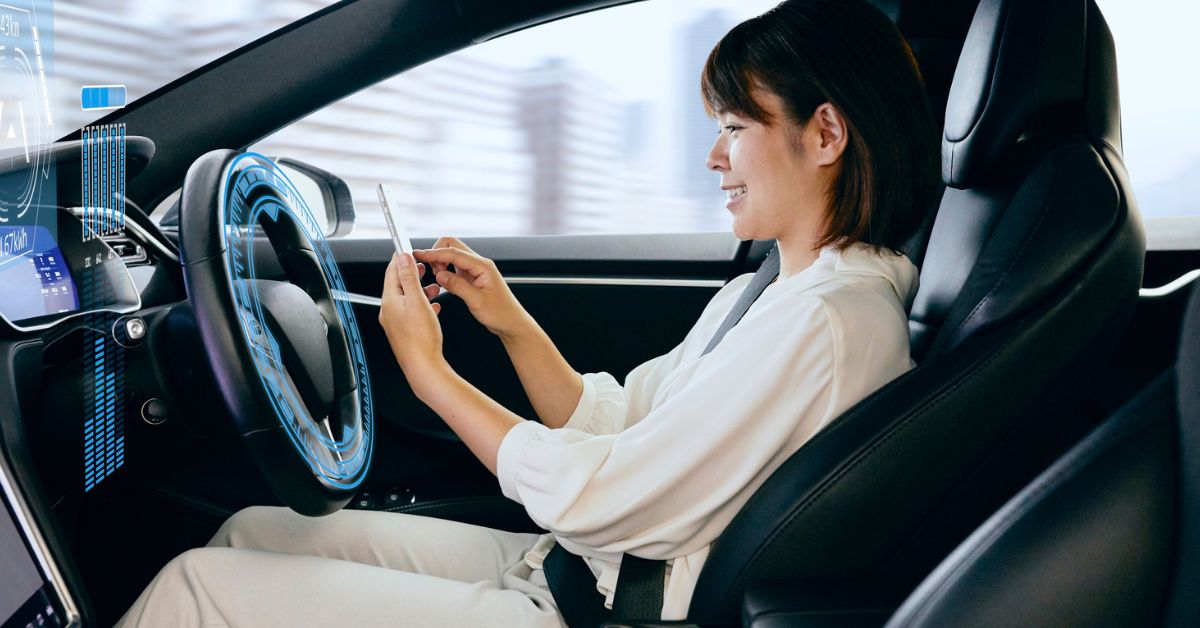
The Science Behind Self-Driving Cars
Outline:
- Why Self-Driving Cars Are More Than a Sci-Fi Dream
- The Sensors That “See” the Road
- Mapping the Invisible: How AI Understands the World
- Decision-Making on the Move
- Psychology and Human Behavior on the Road
- Roadblocks: Technical, Legal, and Ethical
- Driving Toward a New Way of Seeing
- FAQs
Why Self-Driving Cars Are More Than a Sci-Fi Dream
Once, the idea of cars that drive themselves belonged to the realm of science fiction. Today, it’s not only possible—it’s already happening. From Tesla’s Autopilot to Waymo’s fully driverless taxis in select cities, autonomous vehicles are transitioning from prototypes to public roads.
But behind every smooth stop, precise turn, and lane change lies a sophisticated symphony of sensors, algorithms, and real-time decision-making that mimics, and in some ways surpasses, human ability.
Self-driving cars are more than machines. They are moving minds—constantly perceiving, processing, predicting, and acting. And understanding how they work is not just about technology—it’s about redefining what it means to navigate the world.
The Sensors That “See” the Road
A human driver sees with eyes, listens with ears, and feels the car through their body. Self-driving cars use a suite of sensors to replicate and even enhance those senses.
- Cameras provide visual recognition—reading lane lines, traffic signs, and signals.
- Radar uses radio waves to detect objects and their speed, especially useful in fog or rain.
- Lidar (Light Detection and Ranging) emits laser pulses to create a detailed 3D map of the environment.
- Ultrasonic sensors detect close-range obstacles, perfect for parking and tight turns.
- GPS and inertial measurement units (IMUs) ensure the car knows where it is, down to the centimeter.
Together, these tools give the vehicle a multi-layered perception of its environment. It doesn’t just “see”—it understands distance, depth, and motion in ways no human could replicate consistently.
Mapping the Invisible: How AI Understands the World
But seeing isn’t enough. The real challenge is interpreting that information—and that’s where artificial intelligence takes the wheel.
AI processes terabytes of data every second to:
- Classify objects (Is that a pedestrian? A bicycle? A plastic bag?)
- Predict behavior (Will the child on the curb run into the street?)
- Understand context (Is this a four-way stop or a roundabout?)
- Plan motion (What’s the safest, most efficient route right now?)
Neural networks, a type of machine learning modeled after the human brain, are trained on millions of miles of real and simulated driving data. The more they see, the smarter they get.
In many ways, self-driving cars are not just navigating roads—they’re learning to think in real time.
Decision-Making on the Move
Imagine driving through a busy city street. A cyclist veers left. A dog runs out. A construction sign blocks your lane. You make decisions in milliseconds.
Autonomous cars must do the same—but without intuition or emotion. They rely on decision engines that balance safety, legality, efficiency, and ethics.
These systems must calculate the “least risky” move at all times—whether that’s braking hard, switching lanes, or waiting patiently. And they do it by weighing probability, speed, trajectory, and intent.
The irony? These machines may eventually become safer than humans. No texting. No fatigue. No road rage. Just data-driven logic and unblinking attention.
Psychology and Human Behavior on the Road
But here’s the twist: roads are not purely logical systems. They are emotional theaters filled with unpredictable human behavior.
A driver might speed up out of impatience. A pedestrian may hesitate or wave you on. There are cultural norms, unwritten rules, and moments of mutual eye contact that machines still struggle to interpret.
That’s why developers study behavioral psychology as much as engineering. They try to model intent—to teach cars how to predict what humans will do next, not just react after the fact.
Because sharing the road means not just avoiding crashes, but understanding people.
Roadblocks: Technical, Legal, and Ethical
Despite astonishing progress, self-driving cars still face major challenges.
Technically, they struggle in extreme weather, with unusual road layouts, or when sensors are obscured. Edge cases—rare scenarios like a person in a Halloween costume on a highway—are hard to predict and plan for.
Legally, the question of responsibility lingers. Who’s to blame in a crash—the car’s owner, the manufacturer, or the code itself?
Ethically, we face thorny dilemmas. If an accident is unavoidable, should the car protect its passengers at the cost of pedestrians? Should it follow the letter of the law or adapt like a human would?
These aren’t just software problems. They are societal ones. And the answers we choose will shape the future of mobility.
Driving Toward a New Way of Seeing
Self-driving cars aren’t just a technological marvel. They represent a new form of perception—a mechanical kind of awareness that mimics the brain, yet runs on code.
They ask us to rethink what it means to trust, to decide, to act. They reflect our values, magnify our flaws, and hold up a mirror to how we behave behind the wheel.
In embracing them, we are not only designing smarter machines—we are exploring how to build safer, more empathetic systems for everyone on the road.
Because the ultimate goal isn’t just a car that drives itself.
It’s a world that moves more intelligently, more inclusively, and more humanely.
FAQs
Are self-driving cars completely autonomous now?
Not yet. Most systems today offer partial autonomy (like Tesla’s Autopilot), but full self-driving—where no human attention is needed—is still in development and testing stages.
What makes self-driving cars safer than human drivers?
They don’t get tired, distracted, or emotional. They react faster, follow rules consistently, and monitor 360° in real time. But they’re still learning to handle rare or ambiguous situations.
When will self-driving cars become mainstream?
Adoption will likely be gradual. Limited use in controlled environments (like delivery vehicles or ride-hailing fleets) is already happening. Widespread public use could take another 5–10 years depending on regulation, infrastructure, and public trust.